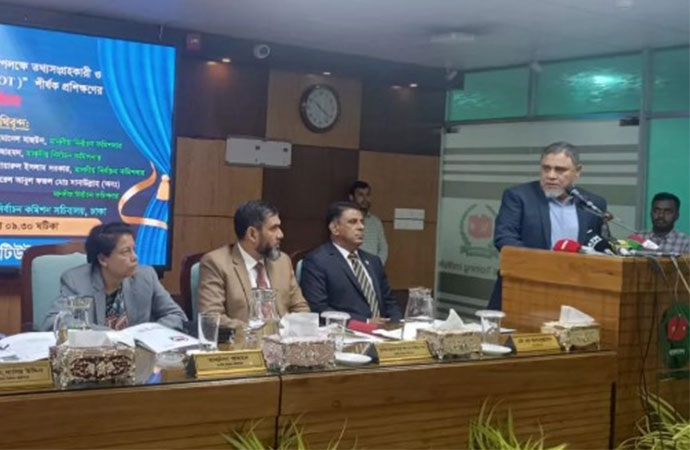Global

HOerwin56 from Pixabay, public domain
MMT has gained a strong following in advanced economies, but the theory's key insights are of limited value to low- and middle-income countries.
Modern Money Theory (MMT) has recently generated considerable discussion and a growing following thanks to the brilliant success of its proponents in popularizing the theory. However, much of the recent attention has been critical. While a significant amount of this criticism has focused on MMT's relevance to advanced economies, particularly in the United States, debate about the applicability of MMT-inspired policies in developing countries has been relatively limited. Since MMT is now garnering attention in developing countries, amidst crises of legitimacy for orthodox macroeconomic policies, the need for critical engagement with MMT from a developing country perspective is becoming increasingly relevant.
Unfortunately, the wide applicability of MMT is often too simply assumed by academic advocates that have made little attempt to qualify key arguments. The COVID-19 economic shock has amplified our concerns with these developments, as direct central bank financing of fiscal policy has appeared to be more appealing to policy-makers in a period where the prospects for tax financing are diminished by the collapse of incomes, while 'flight to safety' dampens foreign demand for government bonds.
In our recent working paper, we argue that the MMT framework mischaracterizes the essence of the economic development challenge for low- and middle -income countries. The primary long-run growth challenge faced by these countries concerns structural transformation, i.e., the transition to an industrial economy, rather than general aggregate demand insufficiency. However, even if MMT had a correct diagnosis of the principal growth challenge faced by developing countries, the chief policy recommendations emphasized by MMT might be counter-productive if implemented outside of select advanced economies. These two points make us sceptical of the relevance of the MMT approach to economic problems in developing economies.
Misdiagnosis of the problem
One of the central features of the MMT literature is advocacy for the state fulfilling a role of Employer of Last Resort (ELR) as a means to achieve a full employment objective. The ELR is a proposal for a government-funded program whereby the government employs all unemployed labour who are ready, willing, and able to work in a public sector project at a basic wage rate. In this way, governments can introduce a mechanism to respond to business cycle fluctuations by absorbing excess labour supply when the private sector contracts and can release workers when the economy is booming. The end target of an ELR program is to achieve full employment at all stages of the business cycle.
Building on MMT's central premise that governments that issue sovereign currencies are not financially constrained, ELR advocates argue that there is always the financial capacity to pay for these programs. Some advocates argue that since most developing nations have a 'sovereign' currency, they can 'afford' to buy whatever is for sale in the domestic currency, including unemployed labour.
Why is this an unconvincing approach to the economic problems of developing countries? The main issue here lies in the conflation of 'cyclical' and 'structural' unemployment. Drawing from a long history of economic thought, including prominent post-Keynesian economists such as Joan Robinson and Michal Kalecki, we think the underdevelopment challenge regards solving a structural unemployment problem. In principle, this is a question of how to raise the rate of investment over the long-term rather than smoothing out shorter-term fluctuations in economic activity. This perspective is consistent with a number of contributions to development economics that have highlighted the importance of policies that raise the share of investment in total output.
In our paper, we illustrate that sustaining prolonged periods of rapid capital accumulation might require curtailing (certain types of) current consumption to create space for a high investment share of output. This need begets serious political economy questions for growth strategy in developing countries, where inequalities and absolute poverty are often pronounced. In our view, one of the most socially desirable ways of creating resources for a prolonged capital accumulation would be to reduce luxury consumption through progressive taxation. We see this approach in contrast to some MMT proponents' attitude towards distributional issues.
Challenges to MMT in the international monetary context
The second issue we highlight in our paper is that MMT's chief policy recommendations have limited applicability outside of select advanced economies, due to the limitations to monetary sovereignty in developing countries. The international monetary system has a hierarchical structure organized around a key currency, the US Dollar. In this system, other currencies are positioned according to their degree of liquidity, which reflects the ability to perform three fundamental functions of money on the international scale: the means of payment, the unit of account, and store of value. The inability to perform these functions on a global scale places developing countries at the bottom of this structure, suggesting that most developing nations lack monetary sovereignty.
The hierarchical nature of the international monetary system engenders various challenges for developing nations. It makes them vulnerable to capital outflows and their currency markets more susceptible to the volatility of short-term financial flows. When developing countries are subject to vagaries of international capital flows, central bank financed government deficits will likely result in the devaluation of domestic currency due to capital outflows and pressures on the current account balance. This can have severe implications for inflation and external debt financing, particularly if there is i) heavy reliance on imports of key intermediate goods, ii) high level of foreign borrowing by the private sector, and iii) absence of capital controls.
Operating under vulnerability to portfolio outflows and exchange rate risk, MMT policies can put developing country governments in a position to choose between issuing domestic currency to finance necessary imports or preventing the exchange rate from collapsing. In essence, developing countries design their fiscal and monetary policies under the threat of capital flight, which results in the adoption of policies that are not completely autonomous. This suggests that the constraints on policy choices are not always purely political and self-imposed, as argued by MMT.
Importantly, recognizing the structural limits to fiscal and monetary space in developing countries does not preclude an active role for the state. In our view, a more complete approach to state intervention in developing countries ought to focus on how to conduct trade and industrial policies that stimulate industrial activity.
Aggregate demand policy is crucial for short-run and long-run growth in a number of ways, but merely boosting aggregate demand is not a development strategy.
From openDemocracy

























Leave a Comment
Recent Posts
23rd DIFF concludes; ‘Priyo Ma ...
The 23rd Dhaka International Film Festival (DIFF) concluded on Sunday, ...
Gallery Chitrak launches Syed ...
The publication ceremony of the book "Rafiqun Nabi'r Chitraba ...
‘Power of Pain and Pathos 2’: Embassy of the Netherl ..
‘Echoes In Form’: Rediscovering Shyamal Chowdhury th ..
SeaKeepers shows the way for plastic waste managemen ..
Exploring Sundarbans: A sense of wonder and global r ..